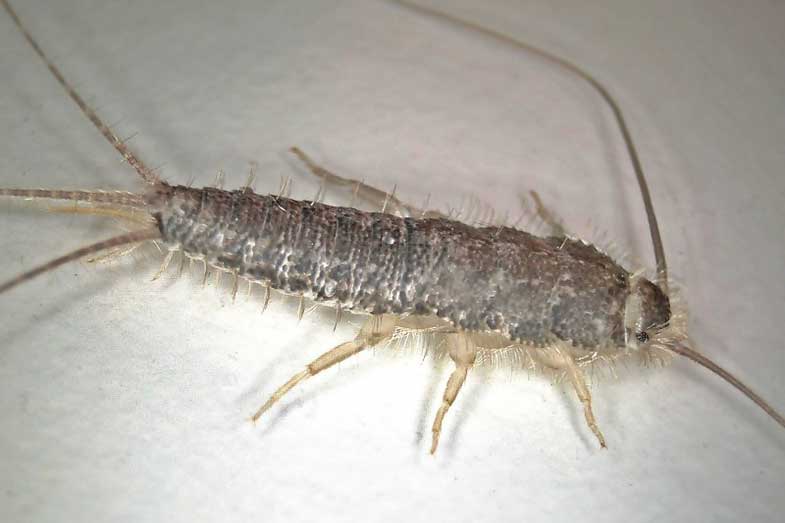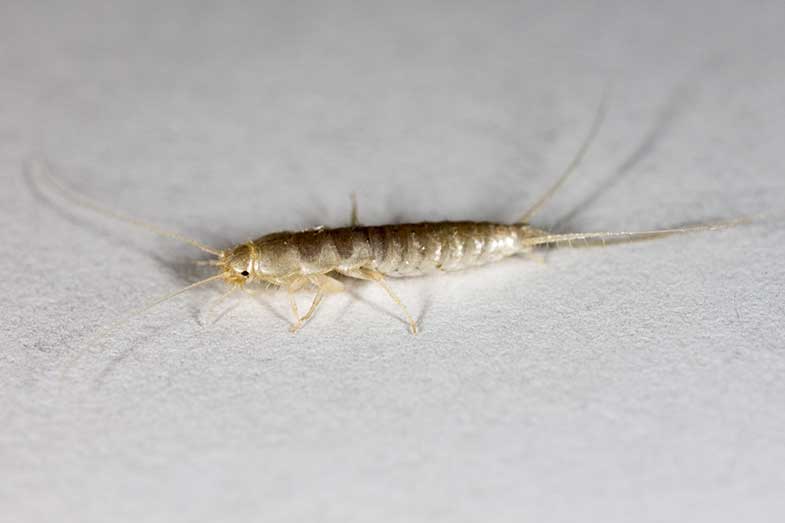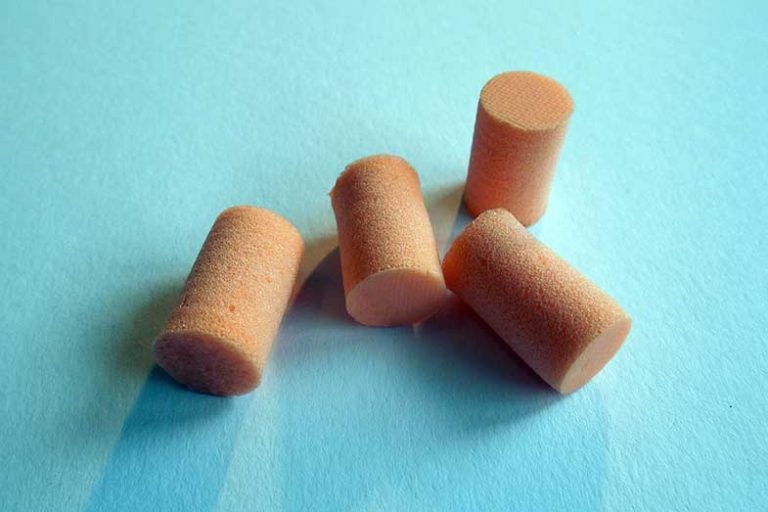How to Get Rid of Silverfish in Bed (8 Tips)
Disclosure: We may get commissions for purchases made through links in this post.
Silverfish can make anyone’s skin crawl. Finding them in the bedroom makes them extra creepy. So what attracts these bugs to our homes? Are they harmful to humans? And why do some homes become silverfish dwellings while others do not?
Although silverfish can be a nuisance, they don’t spread disease among humans like other bugs do. They don’t bite or bring disease, so they are pretty harmless. They scuttle around at night to feed on starchy objects and other surprisingly odd stuff–like dandruff. On a serious note, silverfish can destroy a lot of your personal belongings, so it’s important to deal with the infestation right away.
A question you might have is, “How do I get rid of silverfish in my bed?” Getting rid of silverfish is a challenge since these critters only come out at night. But with a few tricks up your sleeve, you can eliminate these bugs without a professional exterminator. These critters love dark and humid environments, so removing excess moisture from the air is the first thing you need to do to get these creepy-crawlies out of your home. You can also use natural concoctions to trap and repel these pests.

What are Silverfish?
Silverfish are wingless, quick-moving insects that got their name from the color of their outer shells and from the way they slither side to side like fish. They are also called bristletails because of the tail-like appendages on their rears.
While silverfish are mostly nuisance pests, they are also destructive insects–triggering allergic reactions, damage property, and stain fabrics. These humidity-loving vermins thrive in dark and moist places like kitchens and bathrooms but can also be found in bedrooms, where they hide among beddings and other personal belongings.
What Do Silverfish Eat?
Silverfish are nocturnal insects, and as such, you’ll only find them crawling around at night. They seldom forage during the day, but when they do, it’s because they need new shelter and food.
They love feeding on almost anything–from grains to wallpapers. Their attraction to sugary or starchy substances means that they can eat almost anything within their reach. Silverfish love a good book to chew on and fabric to nibble. Leather is no exception, and the glue at the back of wallpapers is just as appealing for them.

Once a silverfish gets its jaws on your stuff, you will surely find gray spots and small holes where it grazed. The damage can sometimes be remedied (e.g., throwing clothing in the wash to remove stains), but the damage is often beyond repair.
Where Do Silverfish Come From?
Silverfish go where there is food and shelter. Outside our homes, silverfish reside in places where there is moisture. Mulch, bushes, boxes–these are attractive dwellings for these nocturnal insects.
Piles of leaves, damp wood, and anything that traps moisture is a magnet for pests. Silverfish can also be found near leaky gutters where they can chew on wood and make their way inside our homes. As they are small, silverfish can squeeze themselves in small entrances. They get through the cracks on window sills, door frames, pet doors, fireplaces, and more. Woods and boxes that we bring inside our homes may also transport these insects indoors.
Once inside, they’ll seek shelter in humid areas to feed and lay their eggs. A female can lay up to 20 silverfish eggs per day.
Are Silverfish Harmful?
Although silverfish are not harmful to humans, they can cause damage to personal items. These vermins like to chew on books, clothing, and upholstery–leaving droppings and debris that may trigger allergies in some people.
Some people who are allergic to dust mites may also be sensitive to silverfish. The protective coverings of these bugs contain a protein called tropomyosin, which triggers allergic reactions. If you are averse to certain shellfish, you may also be allergic to silverfish as tropomyosin is also found among crustaceans.
But beyond being the pests that they are, silverfish can be indicators of more significant problems in the house. Extremely dry hot weather drives silverfish out of their outdoor hiding places to seek shelter in moist environments.
If you think there could be a silverfish infestation in your home, check the pipes and gutters for leaks. A wet environment is an invitation for these moisture-loving pests to come in and settle in our homes. Also, check your walls for cracks where these insects may hole up to build their nests.
How to Get Rid of Silverfish in Bed
Getting rid of silverfish can be tricky since they are nocturnal and are very good at hiding. But with a well-defined plan, you can shrink their population. Here’s how you can kick silverfish out of your home for good:

1. Keep moisture at bay with a dehumidifier.
Silverfish thrive in moist environments. Like most insects, they keep themselves hydrated by pulling moisture from air. Removing a water source will force these bugs to look for another damp spot to live in.
A dehumidifier like the hOmeLabs Dehumidifier for Extra Large Rooms and Basements (view on Amazon) is a workhorse in zapping excess moisture in large areas. If you want a smaller device, the Frigidaire 35-Pint Dehumidifier (view on Amazon) is a portable and an equally powerful machine that you can set up anywhere in your house.
Although it’s good to use a dehumidifier in the bedroom, keep in mind that some silverfish may seek refuge in damp places like the kitchen and bathroom. Dehumidifier with rolling casters can help you set up easily in any room.
2. Deep clean your mattress and all corners of your bedroom.
Mattresses should be cleaned at least twice a year. But with a silverfish infestation, you might need to clean your bed more frequently. Throw all sheets and pillowcases in the wash to remove droppings and any active chompers hiding in the beddings. Then, vacuum the top and bottom of the mattress to suck out the remaining dirt and bugs from the seams and crevices.
If your vacuum does not have a disposable bag, discard the dust cup contents and seal it before throwing it away. This ensures that silverfish and other bugs won’t make their escape and head back into your home.
3. Dehydrate silverfish with diatomaceous earth.
Diatomaceous earth, or DE, is a powder made from algae. DE is a non-toxic powder that destroys the shells of silverfish, so they dry up and die. Sprinkle this powder generously around bedposts, baseboards, and other places where silverfish may be present.
It’s best to dust your home with diatomaceous earth at night when the bugs are most active. DE is a slow-acting powder, so you need to apply it several nights in a row before you can see its effect.
4. Sprinkle Epsom salt to affected areas.
Epsom salt is a natural insecticide that works similarly to diatomaceous earth. It kills silverfish by dissolving their shells, leaving them prone to dehydration. Sprinkle Epsom salt (table salt will also do) to areas where silverfish scamper. Do this for several nights to reduce the silverfish population in your home.
5. Make a bug-repellent spice and herb concoction.
Silverfish and most bugs hate strong smells. Spice sachets made with cinnamon, cloves, and other pungent seasonings create a strong scent that’s repulsive to silverfish. Dried bay leaves and rosemary work just as effective in driving away pests.
Place the spice sachets and dried herbs around the perimeter of your bed and near entryways. You can create spice sachets at home with the use of unused coffee filters or muslin bags. Then add your choice of spices or herbs.
6. Repel silverfish with cedar.
Cedar has a woodsy and camphor-like scent that is pleasant to humans but harmful to pests. This natural insect repellent is commonly used to protect drawers, bookcases, and even beds from silverfish invasion. Cedar shingles treated with fire-retardants are sometimes used as roofing. These are very effective in keeping silverfish out by preventing dampness on the roof and surrounding areas.
You can sprinkle cedar shavings to crevices to entry points such as window sills, door openings, and cracks. Since shavings can be messy inside the house, you can use cedar oil as an alternative. Cedarcide Original Natural Cedar Oil (view on Amazon) is an indoor-use insect spray that repels silverfish, ticks, ants, and other insects. It is plant-based and non-toxic to humans.
7. Change damaged wallpaper.
Silverfish would eat anything with starch in it. Books and wallpapers, in particular, are a favorite. Take a close look to check if there are tiny holes and stains on your wallpaper. This is usually an indication that silverfish (or another type of pest) has feasted on the wallpaper adhesive. You might also notice that the wallpaper is starting to peel away from the wall.
If so, you need to replace it right away to prevent further damage. An alternative would be to paint your walls instead, so tiny pests can be easily spotted since they won’t have a lot of hiding places.
8. Use pesticides like pyrethrins.
Pyrethrin paralyzes and ultimately kills silverfish and other pests. This insecticide is made from chrysanthemum flowers, so they are safe to use inside the house. Spray pyrethrin on baseboards, entryways, and small crevices to prevent bugs from entering the bedroom.
An alternative, permethrin, works in the same way but with the help of a chemical component. It is just as effective and non-toxic to humans but may be harmful to small pets.
While the tips above offer an effective way to get rid of silverfish, preventing these creatures from entering our homes is much more efficient. Here are some ways to prevent silverfish from becoming a significant problem in the house:
- Fix faulty plumbing and keep gutters clean
- Reduce clutter and remove food sources
- Regularly vacuum mattresses and room corners
- Keep off-season clothing in dry and sealed containers
- Remove possible shelters such as leaf and grass litter
- Add caulking to cracks and crevices
- Weather-strip doors and windows
Conclusion – How to Get Rid of Silverfish in Bed
When it comes to silverfish, preventing an infestation is better than curbing it. Depriving silverfish of their food and home is the best way to their population and drive out the remaining pests from the bedroom.
A good dehumidifier can remove excess moisture in the air, which creates a damp and conducive environment for silverfish to nest and breed. Natural repellents made from a concoction of herbs and spices are also useful in fending off these critters. You can also use ready-made cedar bug sprays to deter silverfish and other bugs from entering the house through cracks and other small entrances.






